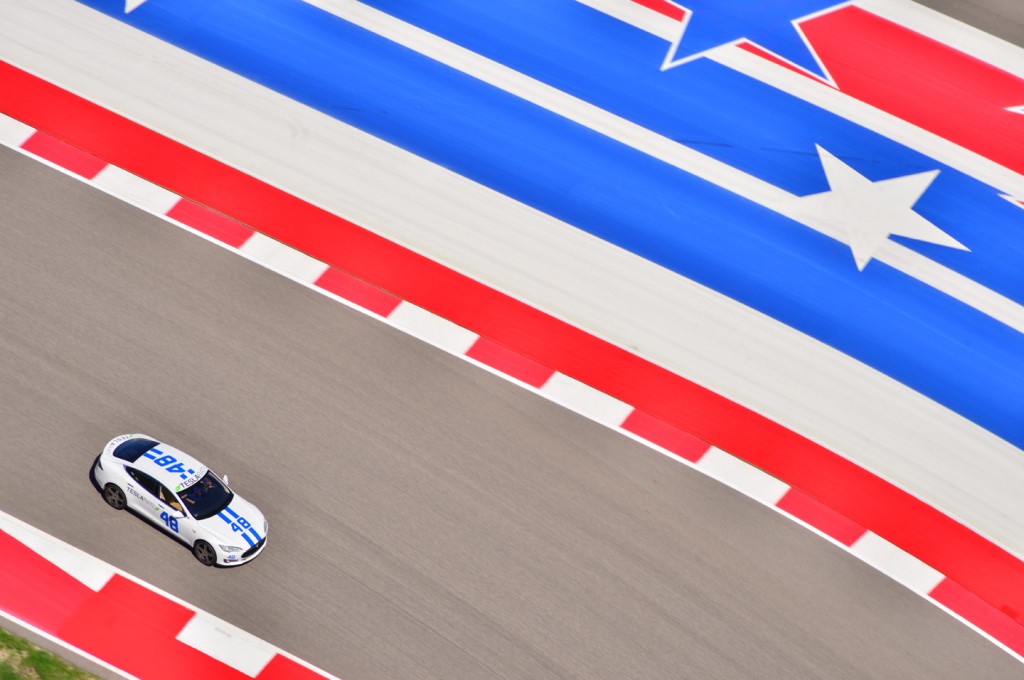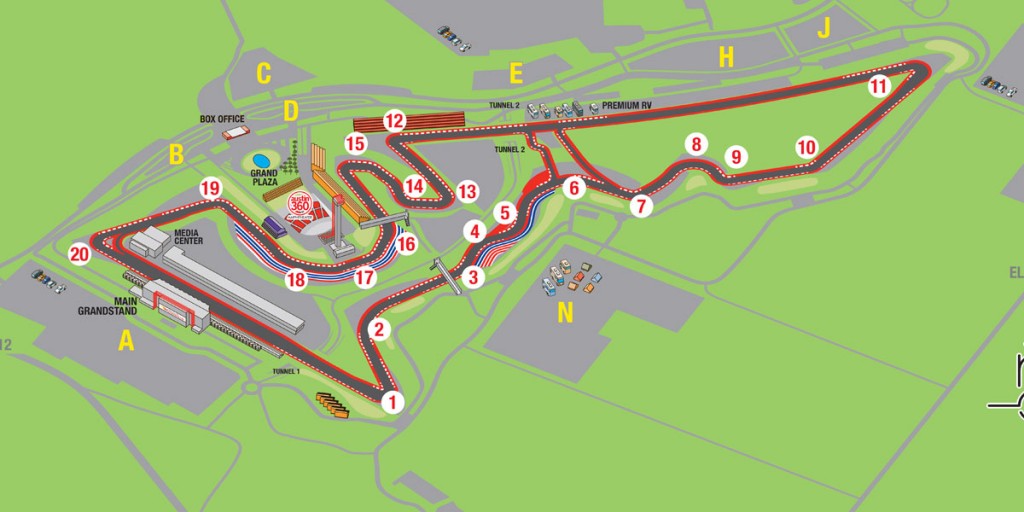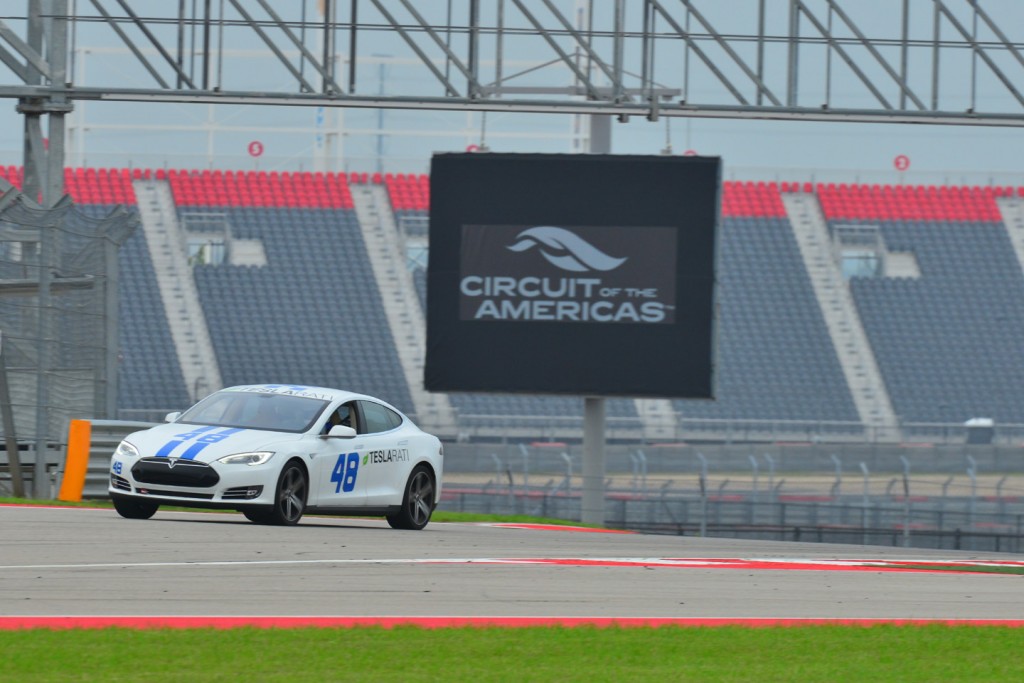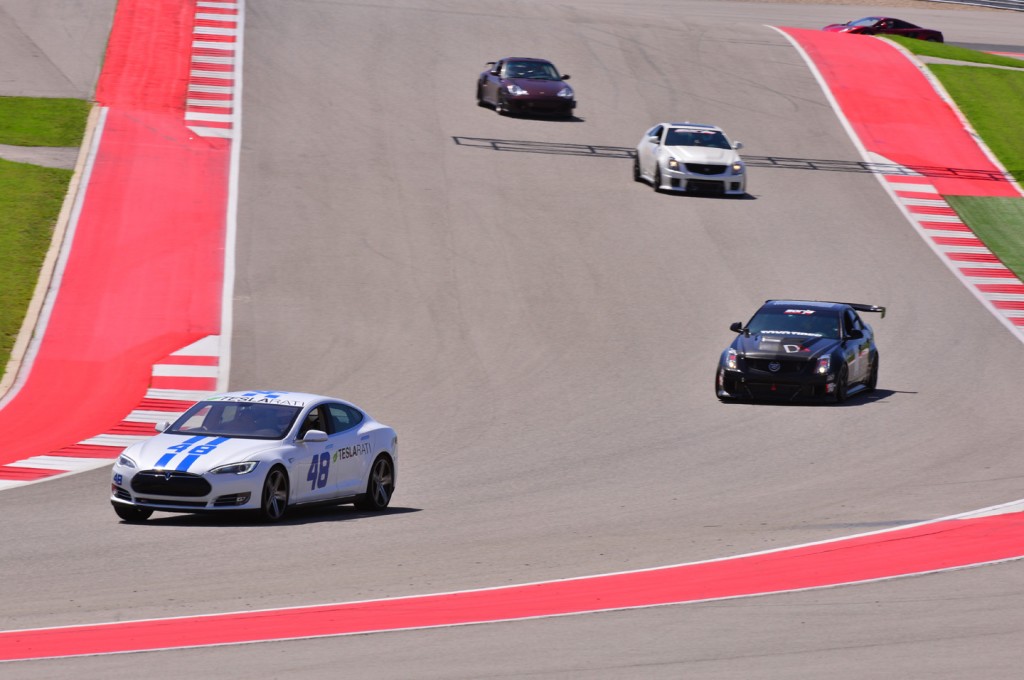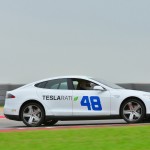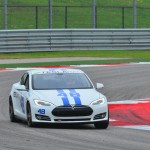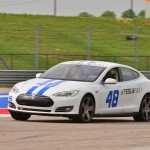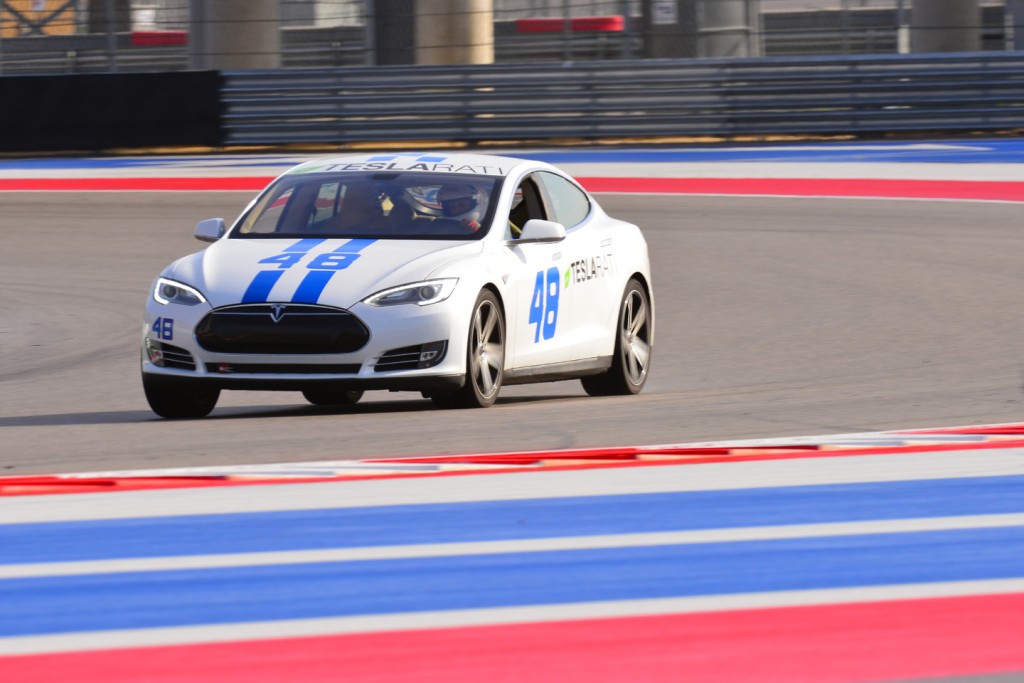Racing
Tesla Model S Takes on Formula 1 Racing Circuit
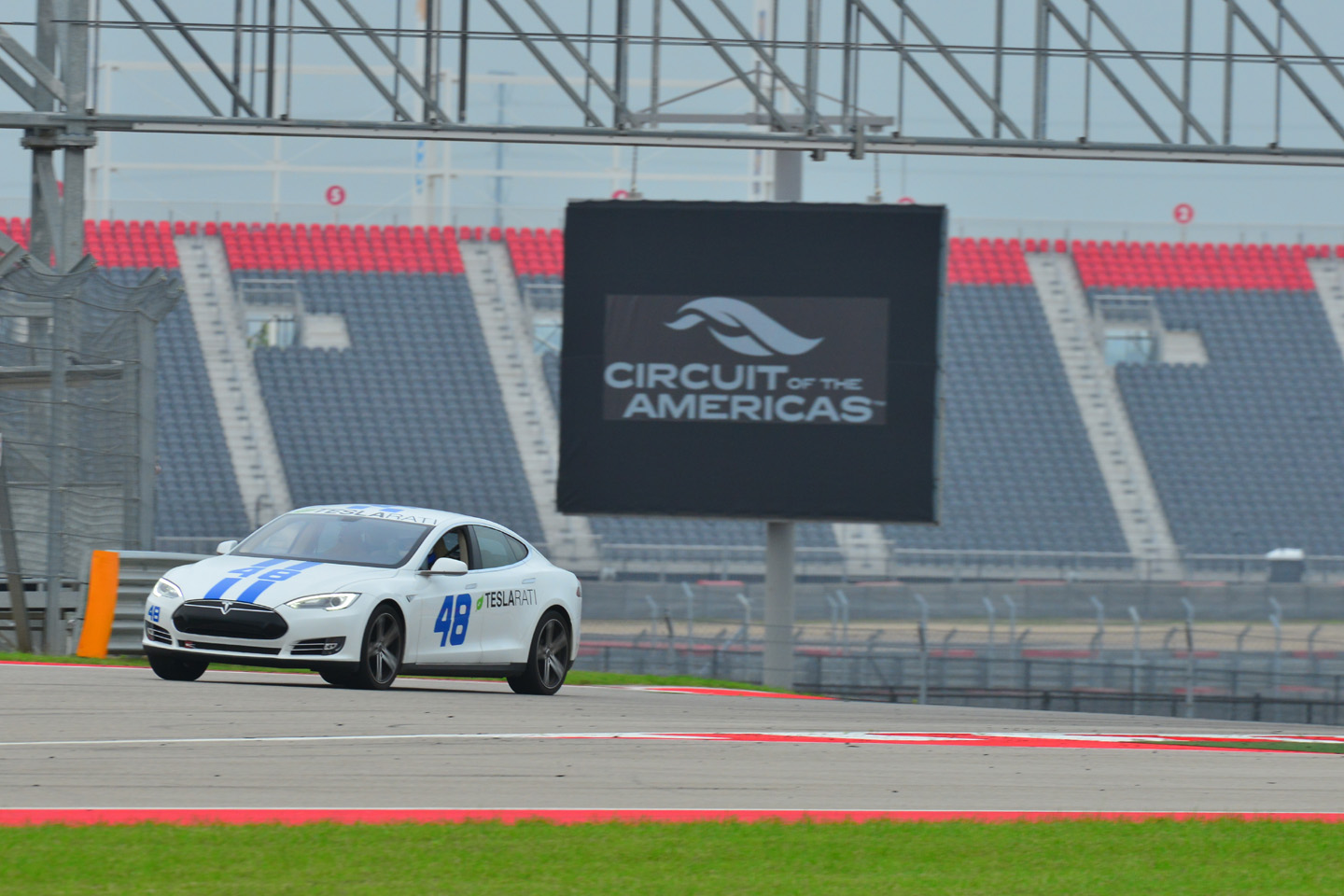
We took a trip to Austin, Texas to experience the thrill of a Formula 1 track in our 48 Tesla Model S
We headed out with the organizers of REFUEL to Circuit of the Americas (COTA), a world-class race track built in 2011 that has hosted some of the top racing organizations in the world such as Formula 1. Having gone to various tracks in all shapes and sizes over the past couple of years, to say that COTA is an experience of a lifetime would be an understatement.
Circuit of the Americas: The Track
By far the most fun aspect of the track is its layout which allows for extreme high speed even across the technical sections. The world-class Formula 1 track has the smoothest surface we’ve ever seen, but the only problem with that is, when wet, it’s completely not drivable (at least for non-Formula cars) – anything above street speed results in sliding. The wide nature of the track is great for passing and provides buffer room for mistakes. Even the shoulders of the track are more than a car wide. The facility itself is enormous. Even after our GPS informed us that we have arrived at our destination, we still had several miles to drive after that!
The track length is 3.4 miles, with two big straightaways and several technical sections.
How did the Model S perform?
 Being a big and heavy car, the Model S prefers big and wide tracks with high speed straights. The S sections (turns 3 through 9) and wide turns, (16 through 18) were our favorite sections as we found a natural grace carrying the car’s heavy weight smoothly through the high speed turns. The car rotated nicely around the wide turns on our Toyo Proxes R888 285 wide racing tires.
Being a big and heavy car, the Model S prefers big and wide tracks with high speed straights. The S sections (turns 3 through 9) and wide turns, (16 through 18) were our favorite sections as we found a natural grace carrying the car’s heavy weight smoothly through the high speed turns. The car rotated nicely around the wide turns on our Toyo Proxes R888 285 wide racing tires.
Overheating and power limiting was more prominent than ever, but no surprises there given the fast track. However, we were unable able to reach speeds above 115mph on the straightaways despite there being more than enough room to top out the car. For reasons we can’t explain, acceleration was limited and we were not able to increase speed by more than 1 mph per second. We’ve never seen this behavior of the Model S on any other track before.
Our best lap time was 2:49 (10th place in 15 car advanced group).
Charging and Power Consumption
Charging ended up being more challenging than we anticipated. The plan was to run for two sessions and go to the nearest Tesla Supercharger, but the 40 mile distance to was just too far to allow for a mid-day charge. It would have been a 2 hour turnaround time. We ended up using a 50 amp outlet t an RV space. We’re happy the track staff were kind enough to let us charge for free.
We ended up charging at the San Marcos, TX Supercharger before and after the race. Some of the team took the opportunity to test our new Tesla Lifestyle app at the time while we waited for the charge. If you’re interested in following our future journeys, feel free to find our checkin on the app at San Marcos, TX and follow us there.
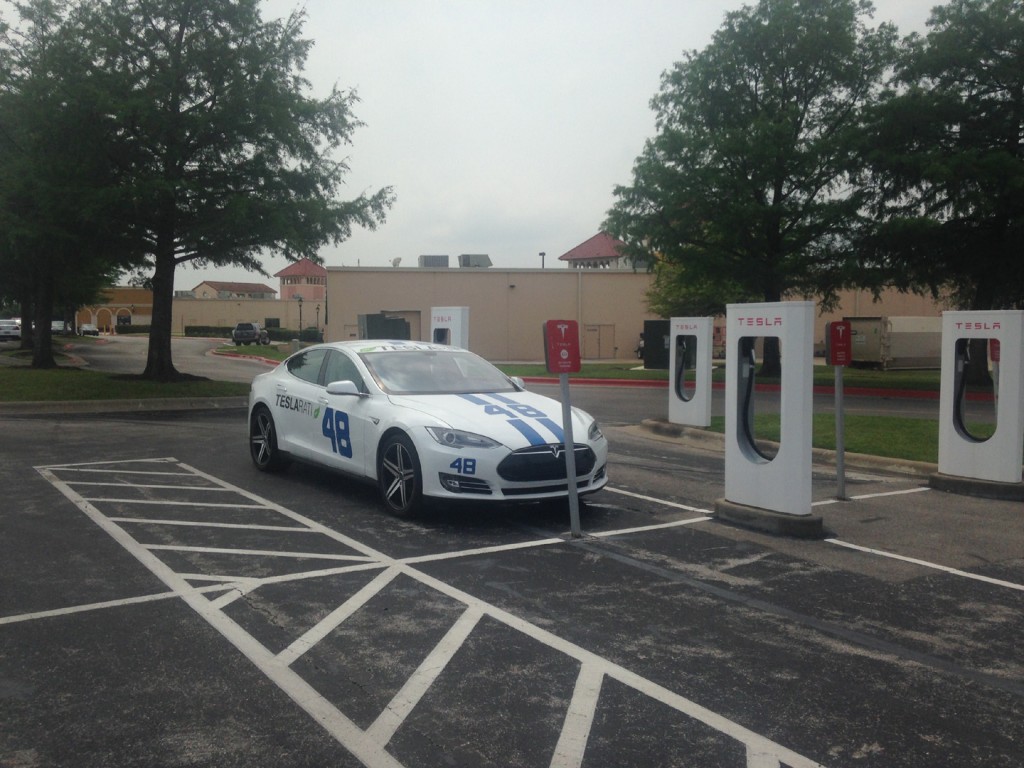
Tesla Supercharger San Marcos, TX via @TeslaratiApp
Energy usage was higher than other tracks we’ve visited, with 5 rated miles used for 1 actual mile driven (it’s usually 4). This translated into about 17 rated miles per 1 lap. Being able to recharge at the track allowed us to run between 15-20 laps which includes the warm-up/cool-down laps.
Overall, it was a very fun and unforgettable experience. A big thank you to COTA and Speed Ventures for being able to do this!

Lifestyle
Diabetic Baja 1000 racer steals the show with ad hoc Starlink Mini setup
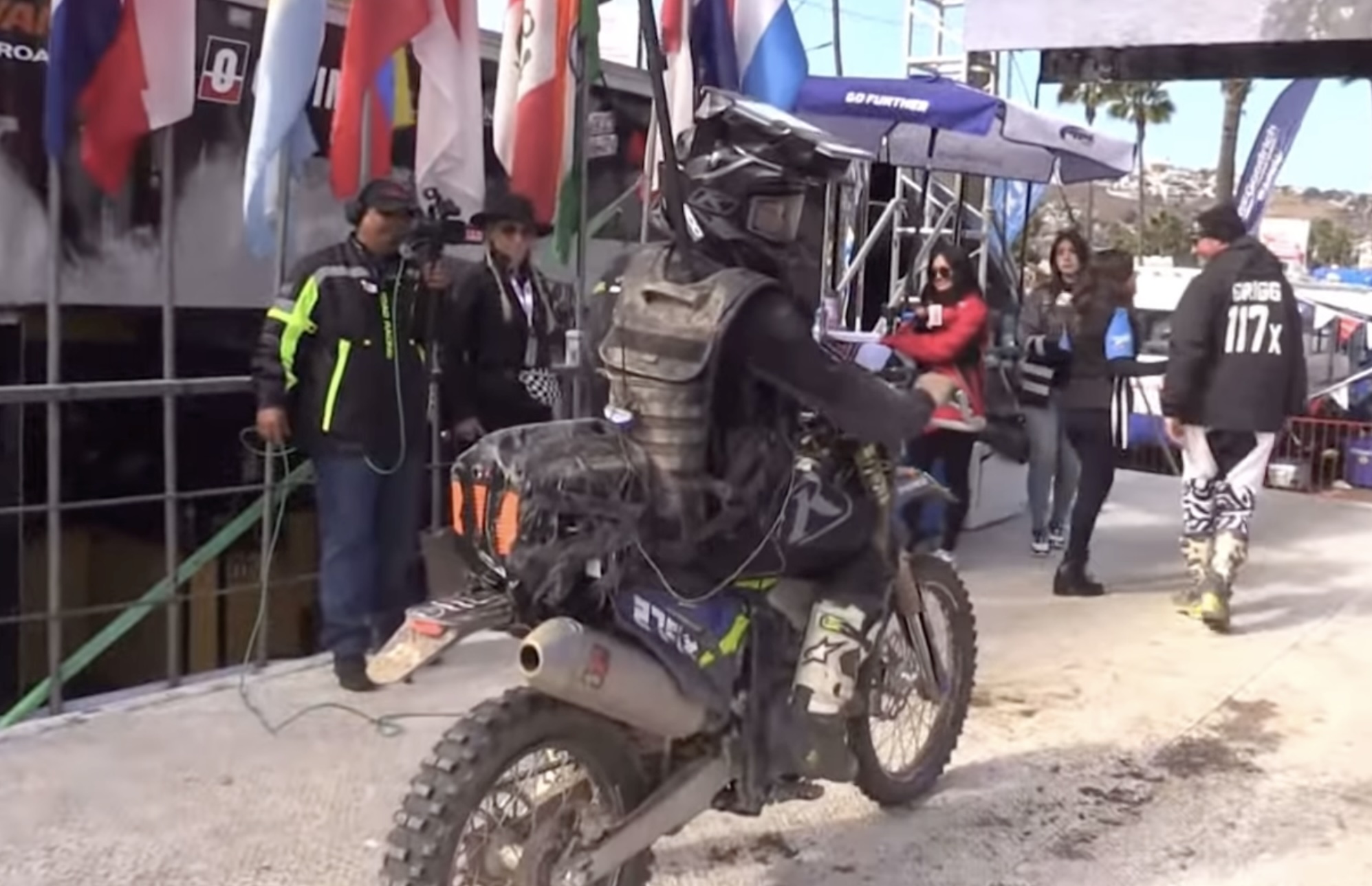
A dirt bike rider stole the show at the Baja 1000 by completing the grueling 1,000-mile race while live-streaming to his mother using Starlink Mini the whole time. The rider, Ben Hundter, and his brother David, completed the race in 31 hours 30 minutes, which is a pretty long FaceTime video call, all things considered.
A video of Hundter finishing the race has made the rounds online, partly due to the racer’s eye-catching Starlink Mini setup. As could be seen in the video, Ben Hundter’s 279X Sportsman Moto class Sherco was equipped with a huge Jackery battery at the rear. The Starlink Mini was duct taped to the rider’s head. The iPhone that Hundter was using to FaceTime his mother was also taped to his chest.
In an interview following the race, Hundter explained that he had always wanted to race the Baja 1000, but his mother was hesitant since he has Type 1 diabetes. And while she did allow him to participate in the grueling race, she had one condition—he has to livestream the race to her the entire time. As such, the Starlink Mini, with its low power consumption, light weight, and high speed internet connectivity, became the perfect solution for the dirt bike racer.
“I wanted to race the Baja so bad, but my mom wouldn’t let me because I have type 1 diabetes. She said the only way I could race it is if I was live streaming to her the whole time, so I have her on my chest right now,” Hundter noted. He also joked that he and SpaceX CEO Elon Musk came up with the duct taped Starlink Mini solution.
Cool— Elon Musk (@elonmusk) November 18, 2024
Elon Musk did see the video of the dirt bike racer completing the Baja 1000 while live-streaming through Starlink, and the CEO seemed impressed. In a reply to a video of the Baja 1000 participant on social media platform X, Musk stated that the feat was “cool.”
Completing the Baja 1000 this year is already a feat in and of itself, so Ben Hundter and his brother David are coming home as winners. Unfortunately for the brothers, they ended up running afoul of a road closure during the race, resulting in the team running an “illegal line” through the peninsula, as noted in a Jalopnik report. This resulted in the brothers getting a 17-hour penalty and a disqualification.
Don’t hesitate to contact us with news tips. Just send a message to simon@teslarati.com to give us a heads up.
Lifestyle
Unplugged Tesla Model S and Model 3 win double podium finishes at Gridlife Laguna
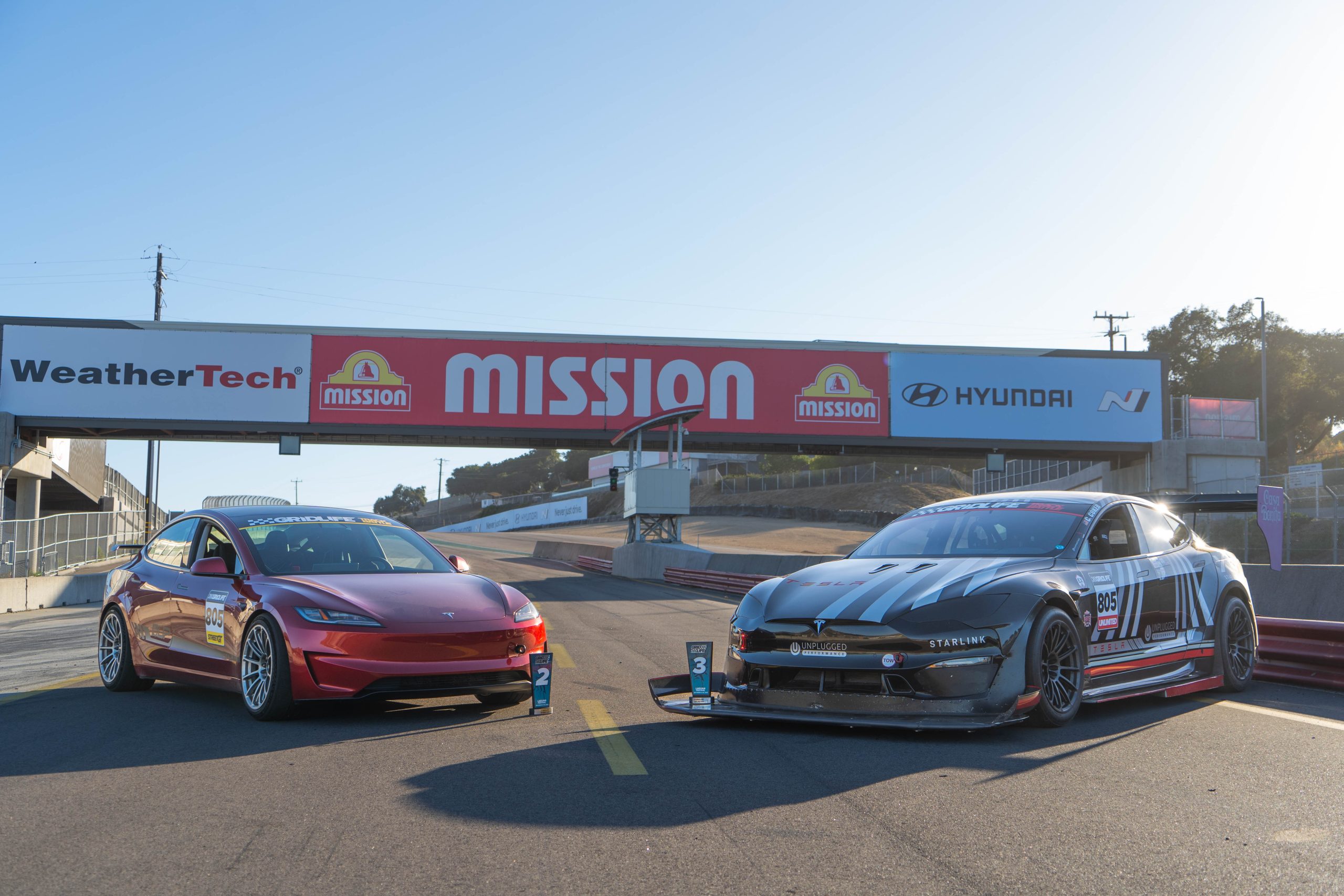
A Tesla Model S Plaid and a reengineered Model 3 Performance from EV tuning house Unplugged Performance participated in the Gridlife Laguna Festival at the Weathertech Raceway Laguna Seca. The twin Teslas ended the event with a rare double podium finish.
The Gridlife Laguna Festival did not have a lot of electric vehicles that participated in the event. In a comment to Teslarati, Unplugged Performance development driver and experienced EV racer Craig Coker mentioned that there were fewer than five electric cars at Gridlife Laguna. Both vehicles competed in Gridlife’s TrackBattle series, which features practice, qualifying, and a final podium sprint. The team’s Model S Plaid, a Pikes Peak sub-10-minute club member called Dark Helmet, competed in the Unlimited Class, and the Model S Performance, called Red Rocket, competed in the Street GT Class.
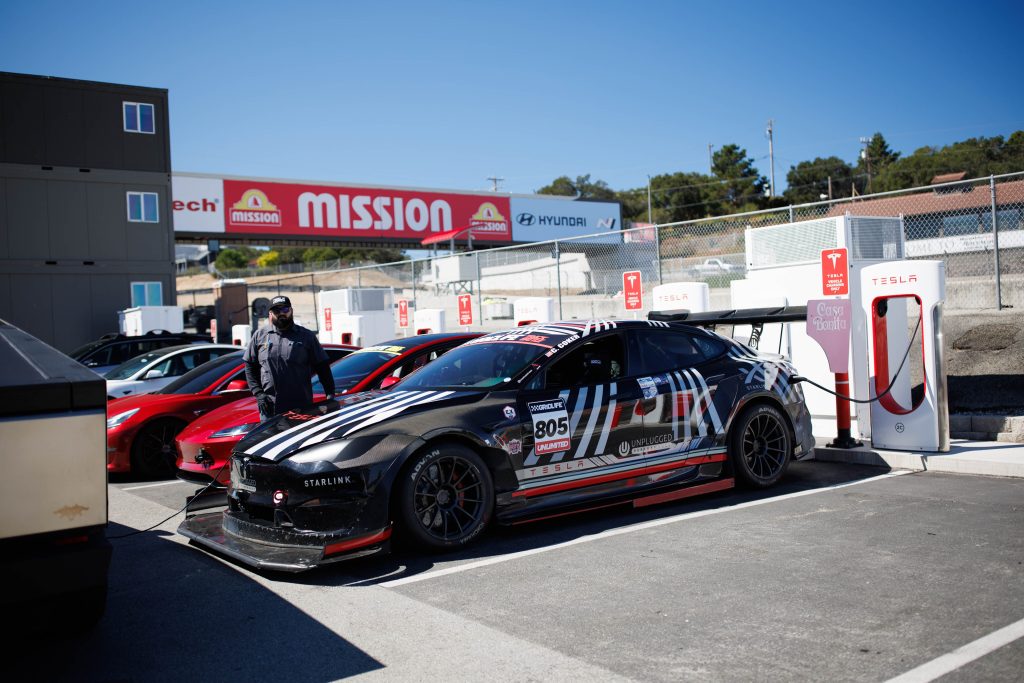
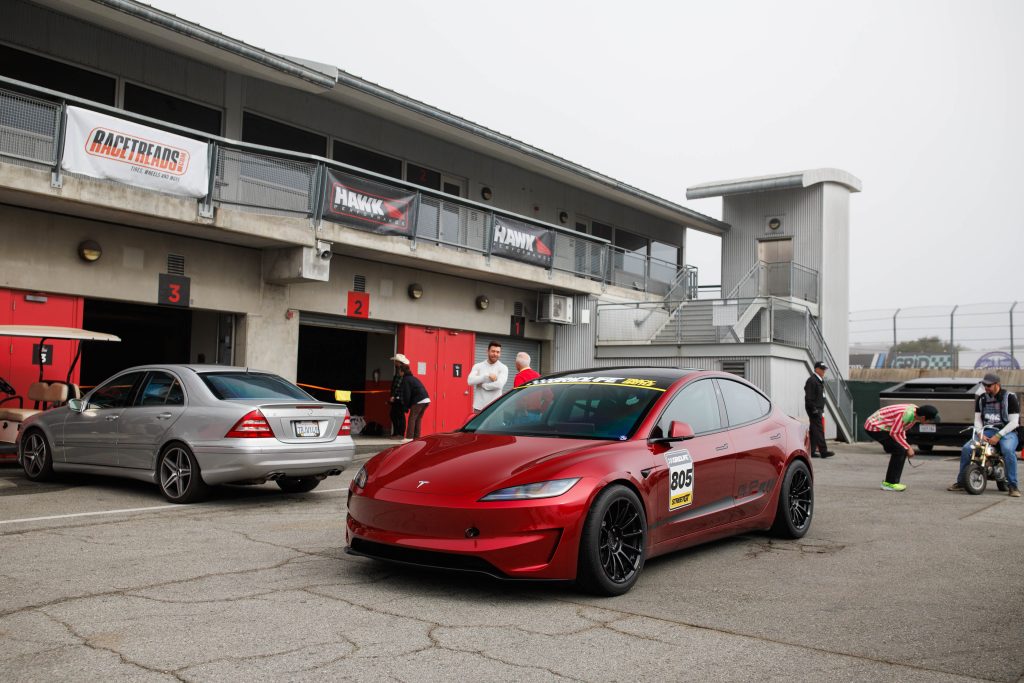
Unique Racers
What is interesting about Unplugged Performance’s twin Tesla racers is the fact that they are very different from what one might expect from a vehicle that’s built to be competitive in a racing event. While Dark Helmet features aggressive aero and a stripped-out interior, it still features a stock drivetrain, battery, and software from Tesla. Conventional racecars powered by the internal combustion engine are typically modified so they can put out more power.
Such a statement is even more accurate for Red Rocket. The reengineered Model 3 Performance competed in the Street GT Class, which is a category for production cars with restrictions on tire width and factory aero components. Similar to Dark Helmet, whose modifications are mostly comprised of Unplugged Performance’s Apex-S Model S series, Red Rocket’s modifications are comprised of the EV tuner’s Ascension-R parts.
In a comment to Teslarati, Craig Coker noted that Red Rocket is easily daily driven, so much so that the vehicle was driven by the Unplugged team to the event, unlike Dark Helmet, which was transported to Laguna Seca via trailer pulled by a Tesla Cybertruck. That speaks to the reengineered Model 3 Performance’s capabilities, and it also highlights how the EV tuner’s parts could still be useful for everyday use.
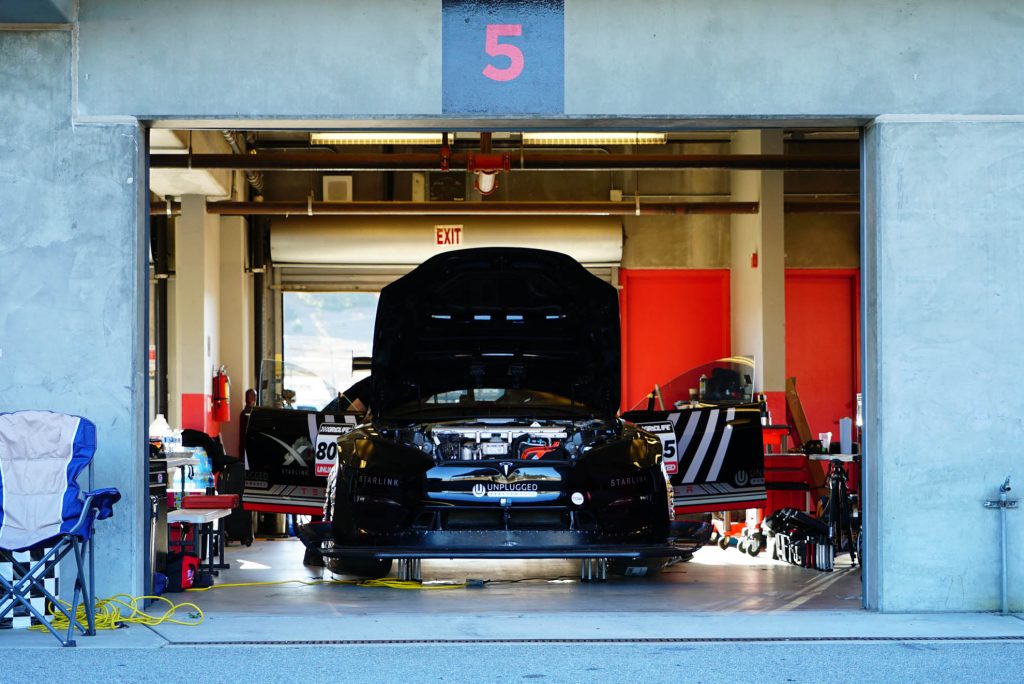
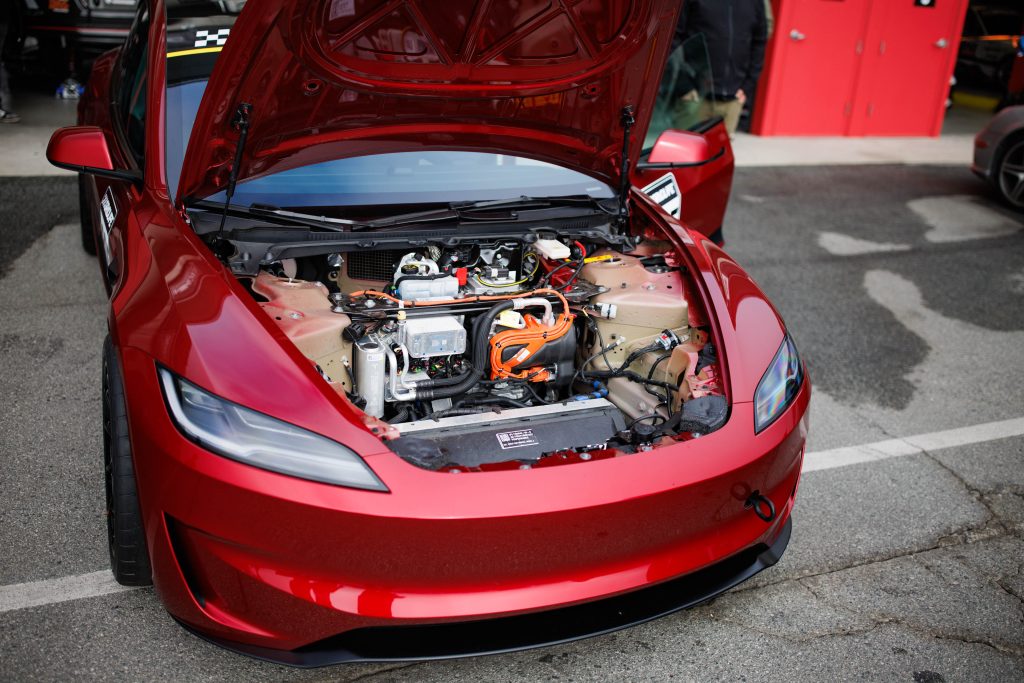
“The 2024 Model 3 Performance we competed with, I would definitely take to the streets, get groceries and take my kids to school. In fact, we drove it to Laguna Seca from LA. Then we competed in it and then drove it back to LA,” Craig Coker said.
The Podium Sprint
The twin Teslas both qualified for the podium sprint in their respective classes, despite some challenges such as Dark Helmet spinning out in one lap. Despite spinning out, Dark Helmet still qualified for the event’s podium sprint. Red Rocket accomplished the same thing, placing second in its class and qualifying for the podium sprint. The Model 3 Performance’s podium sprint ended with a 1:35.666 lap, allowing the vehicle to place second overall in the Gridlife Street GT Class. Dark Helmet completed its podium attempt lap in 1:28.465, allowing the all-electric racer to place third overall in the Unlimited Class. Both vehicles also set all wheel drive records for Street GT for Red Rocket and the Unlimited Class for Dark Helmet.
Craig Coker shared a comment about this year’s Gridlife event, as well as the performance of the twin Unplugged Teslas. “These events are always interesting as we are one of the few EV’s to compete. There are 100’s of vehicles on track over the weekend but less than five EVs in the mix. Sometimes we are hated, sometimes we are made fun of, and sometimes people love what we do.
“But there is one thing no one can deny. When we show up to the track we are consistent in setting records, or a podium, or occasionally both. At Gridlife Laguna this year we went beyond and surprised many with not one but two podiums with two different vehicles in two separate classes. This is a very rare achievement. It could only be achieved with a hardworking and talented pit crew by my side,” he said.
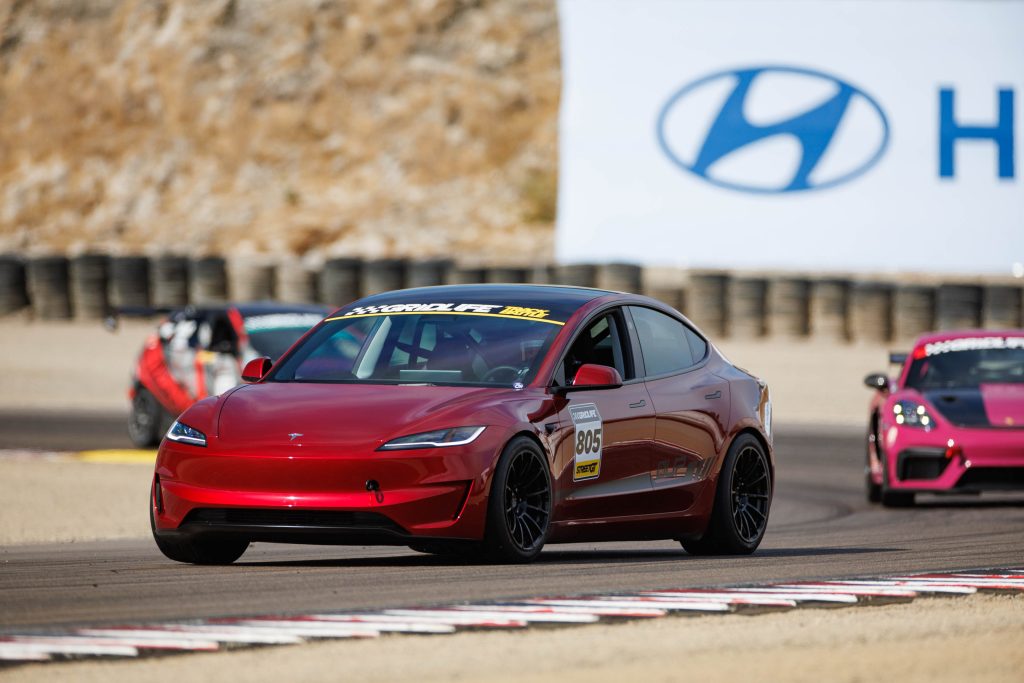
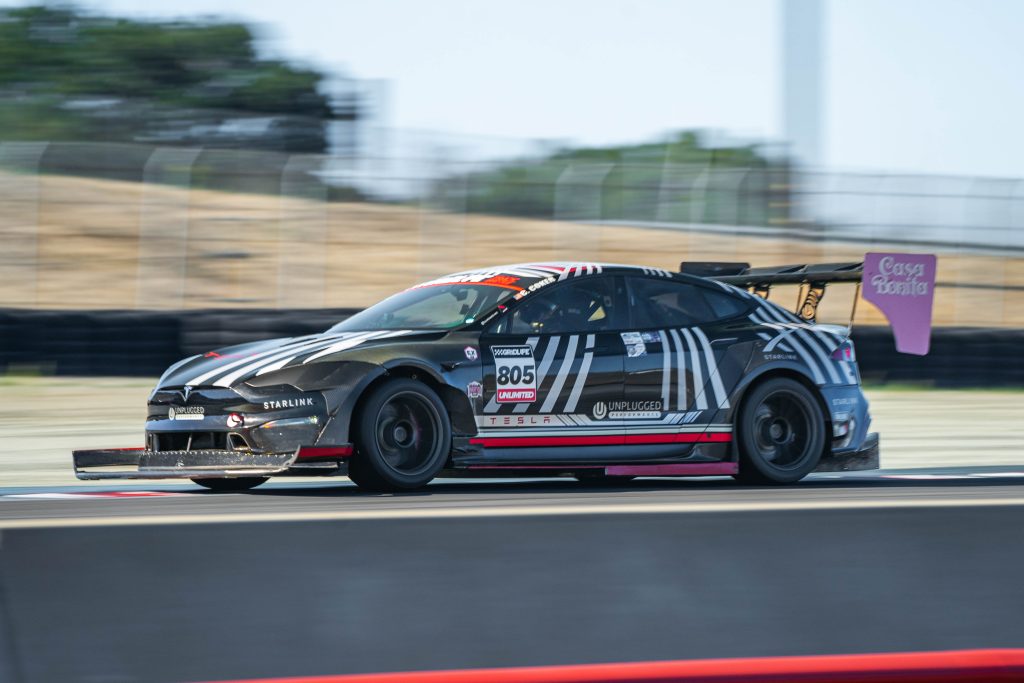
Unplugged Performance CEO Ben Schaffer celebrated the twin Tesla’s achievements at the event.
“The UP Race team, along with our development driver Craig Coker, did a fantastic job. We brought out two Laguna Seca record-holding vehicles: the production EV lap record-holding Model S Plaid, ‘Dark Helmet,’ and our 2024 Model 3 Performance, ‘Red Rocket,’ which holds the lap record for the Model 3 Performance class. Both cars performed reliably against a highly competitive grid of the fastest ICE vehicles and drivers in the country.
“The Model 3 set the Gridlife Laguna Seca fastest lap record for Street Class AWD, while the Model S continues to hold the Unlimited Class AWD lap record. Craig secured two podium finishes, demonstrating the true driving performance of Tesla engineering when paired with the same Unplugged Performance catalog parts our clients enjoy worldwide. EVs deserve a place in motorsports and we remain thrilled to be a rare representative of EV performance in challenging the fastest ICE vehicles at events globally,” Schaffer stated.
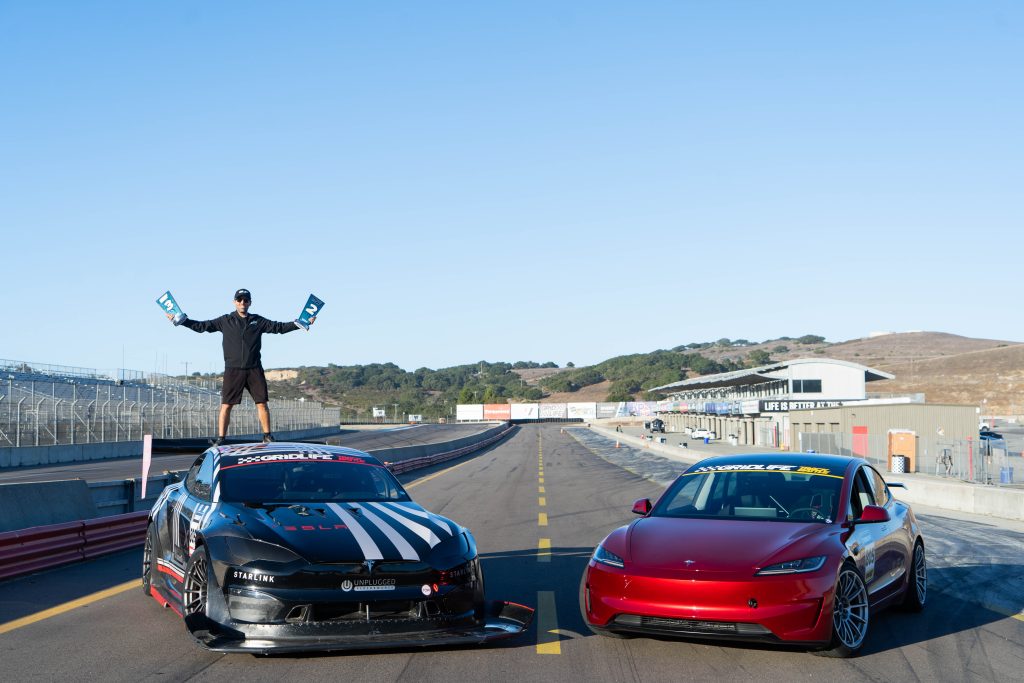
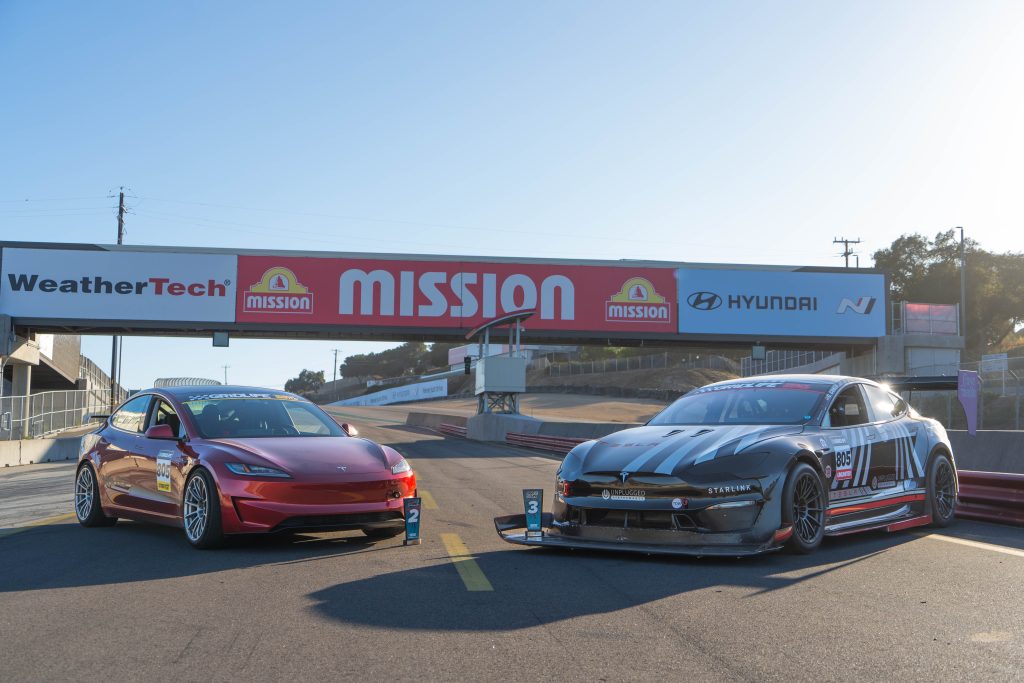
The Next Stop
With Gridlife Laguna now complete, the Unplugged Performance team is now focused on the upcoming race at Thunderhil, which is expected to be held next month.
“Gridlife announced a new west coast championship for 2024 called FCP Euro Pacific Championship. It’s a 3 stop event. Willow Springs, Laguna Seca and Thunderhill. So far we have captured 1st at Willow Springs Raceway, 3rd at Laguna Seca in the Unlimited Class. We are currently P1 in overall points. If we do well at Thunderhill next month we can win the championship. That would be a huge accomplishment for an EV to win this inaugural championship!” Coker said.
There are only a few cars in the hyper-competitive world of automotive racing that are capable of changing the perception of what is possible for a production car. At the track, where victory and defeat are separated by milliseconds, few cars could make an impact large enough that even critics are silenced. As it turns out, the Model S Plaid and the Model 3 Performance—improved by bolt-on parts—could be these vehicles.
Watch a video of the Unplugged Tesla team at the Gridlife Laguna Seca event below.
Don’t hesitate to contact us with news tips. Just send a message to simon@teslarati.com to give us a heads up.
Lifestyle
New Tesla Model 3 Performance pulls off 10.65-second 1/4-mile run
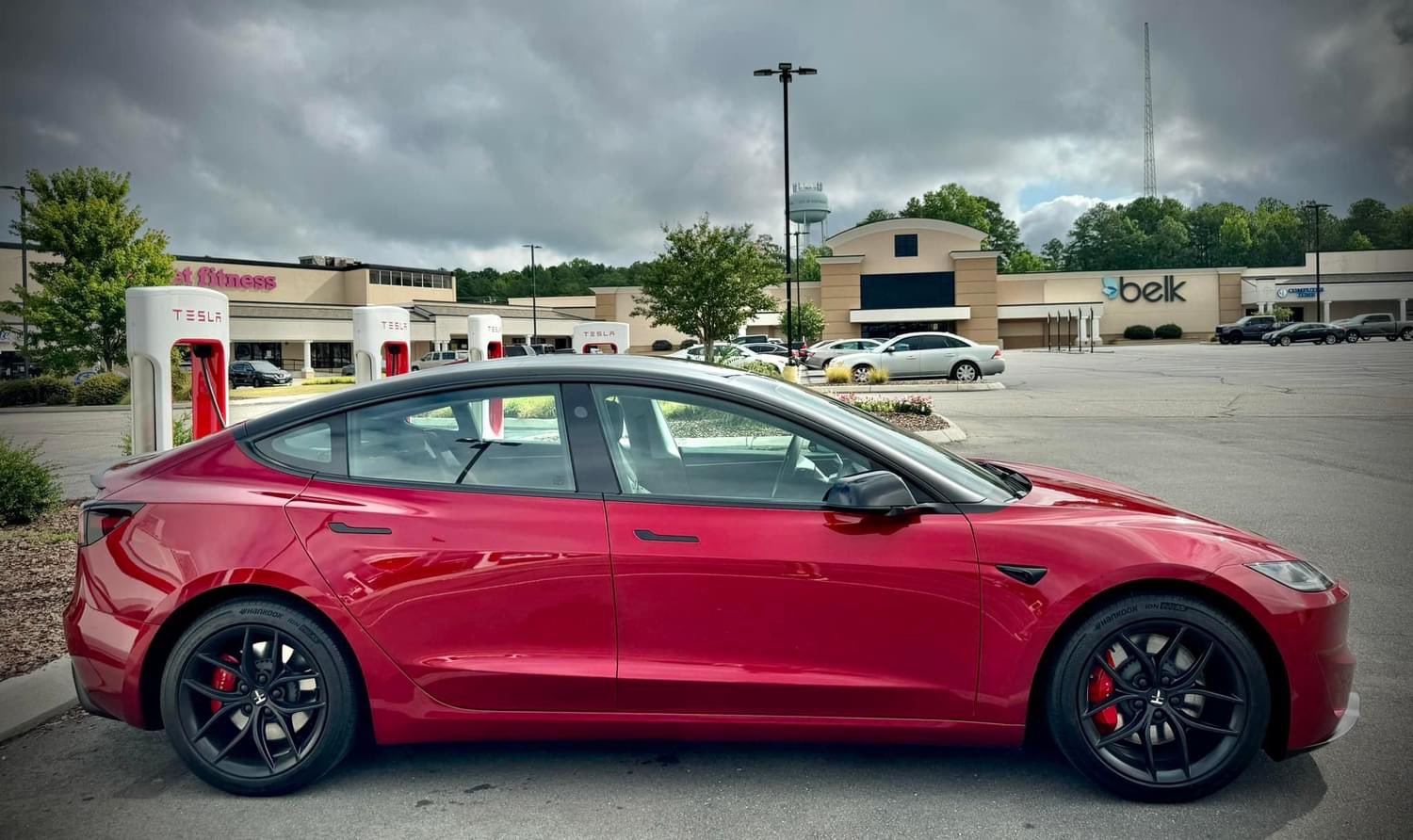
The reengineered Tesla Model 3 Performance is steadily establishing its reputation as the best-performing car in its price range, electric or otherwise. As shared recently on social media, a reengineered Model 3 Performance with a semi-stripped interior was able to complete a quarter-mile run in just 10.65 seconds at 128.05 mph.
The driver of the new Tesla Model 3 Performance, Travis Wills, shared some insights from his run in a post on a Tesla Model 3 and Y Performance Facebook Group. As per Wills, he reduced his Model 3’s weight by about 100 lbs by removing the vehicle’s passenger seats. Wills noted that he weighs over 200 lbs, so he noted that his Model 3’s semi-striped times will probably be comparable to a non-stripped vehicle with a lighter driver.
WORLD RECORD 2024 Model 3 Performance 1/4 mile & 0-60 mph!
1/4 mile in 10.65s@128.05mph
0-60 mph in 2.78s ?
The Model 3 was semi stripped with all passenger seats removed (-100 lbs), and fitted with 18” wheels with Hankook all season tires.
Provided by Travis Willis pic.twitter.com/3gwf0V3PiA— Nic Cruz Patane (@niccruzpatane) July 14, 2024
Apart from its removed seats, Wills’ reengineered Model 3 Performance was stock. It was even equipped with 235/45/18 Hankook All Season efficiency tires. The Tesla driver stated that he optimized his car by navigating to a Supercharger, so the vehicle’s battery temperature was conditioned. Wills noted that this enabled him to pull off consistently good runs.
As could be seen in Wills’ video, the reengineered Tesla Model 3 Performance was able to go from 0-60 mph in just 2.78 seconds, quicker than the 2.9 seconds that is listed on Tesla’s official website. The Model 3 Performance was also able to complete the quarter mile in just 10.65 seconds at 128.05 mph.
https://t.co/uTdOcCUTb7 pic.twitter.com/pLb7fSFvjR— Nic Cruz Patane (@niccruzpatane) July 14, 2024
While these numbers are not as impressive as the Tesla Model S Plaid, such performance is already stunning for a car like the Model 3. A 10-second quarter-mile, after all, was previously only possible with a Model S P100D, the electric vehicle maker’s previous flagship car. In 2019, the Model S Performance’s “Raven” upgrade set a record by running a quarter mile in 10.6 seconds at 127.55 mph. Prior to this, the Model S P100D’s quarter-mile runs were typically recorded at about 10.8 seconds at 125 mph.
This suggests that with just a few missing seats — or a lightweight driver as Wills suggested — the reengineered Tesla Model 3 Performance could complete a quarter mile faster than the flagship Tesla Model S P100D. That’s insane value and performance for a vehicle that starts at just $54,990 before incentives.
Don’t hesitate to contact us with news tips. Just send a message to simon@teslarati.com to give us a heads up.
-

 News2 weeks ago
News2 weeks agoTesla aiming to produce first “legion” of Optimus robots this 2025
-
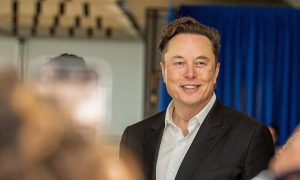
 Elon Musk1 week ago
Elon Musk1 week agoTesla CEO Elon Musk’s simple message to vandals
-
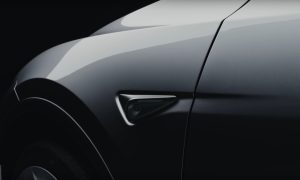
 Elon Musk2 weeks ago
Elon Musk2 weeks agoElon Musk confirms two measures Tesla is taking to fight vandalism
-
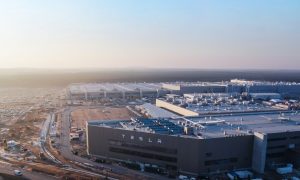
 News2 weeks ago
News2 weeks agoTesla’s Giga Berlin director responds to anti-Musk criticism
-
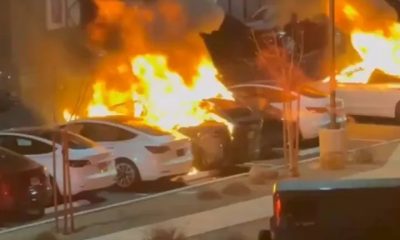
 Elon Musk1 week ago
Elon Musk1 week agoTesla vandal who lit Las Vegas repair center on fire arrested
-

 Elon Musk1 week ago
Elon Musk1 week agoElon Musk clarifies Trump tariff effect on Tesla: “The cost impact is not trivial”
-
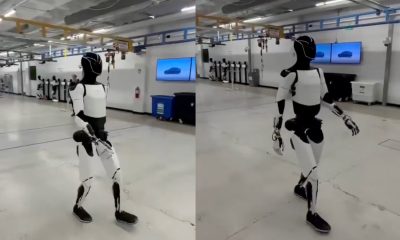
 News2 days ago
News2 days agoTesla shares Optimus’ improved walk in new update video
-
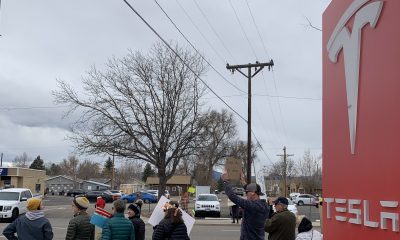
 Elon Musk1 week ago
Elon Musk1 week agoTesla vehicles hit by ATV, suspect caught by Sentry Mode
